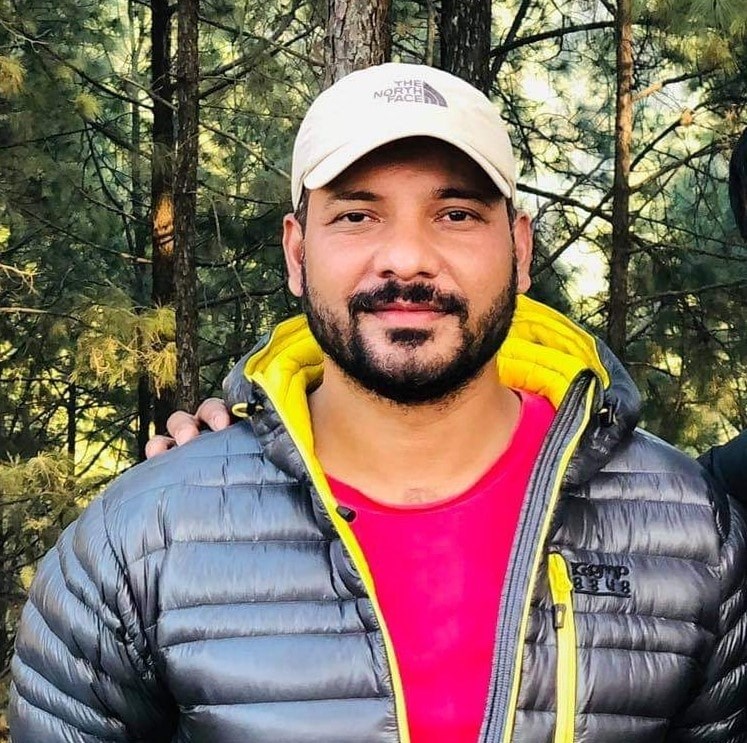If you are familiar with the mountain expedition then you might have also heard about the lethal segments on the mountains that are known as the death zone. The highest mountain in the world, Mt Everest at an elevation of 8,848.86 meters (29,031.7 feet) also has this segment known as the death zone. So what is the death zone on mount everest?
Deathzone is a particular section of Everest that is above 8,000 meters with such a low oxygen saturation level that the climbers are not recommended to stay inside the zone for more than 16- 18 hours. It is one of the ironclad rules for the Everest expedition that the climbers shouldn’t stay inside the death zone for more than the recommended period or it could be fatal.
Table of Contents
Do You Have to Reach Death Zone on EBC Trek?

The death zone on Everest is the particular segment above the 8,000-meter altitude, although the mountaineers in the Everest expedition had to overcome this segment in the mountain, the trekkers doing the Everest Base Camp Trek don’t have to.
However, the expedition that leads to the highest base camp in the world, Everest Base Camp at 5,364 meters (17,598 feet) is no joke either. This iconic Himlayan adventure starts from Lukla, the gateway to Everest at 2,860 meters (9,383 feet).
As you move along the trekking route, you will overcome the high-elevation points of the adventure like Tengboche (3,860 meters), Lobuche (4,910 meters), Gorakshep (5,125 meters) and the highest elevation point of the entire trek, Kalapatthar is at an altitude of 5,645 meters (18,520 feet) from the sea level.
So, even though the trekkers don’t have to deal with low oxygen saturation levels like inside the death zone on Everest, they will still have to be wary of altitude sickness as the oxygen saturation level at the Everest Base Camp is still 50% less than that of the sea level.
How Dangerous is the Death Zone on Everest?
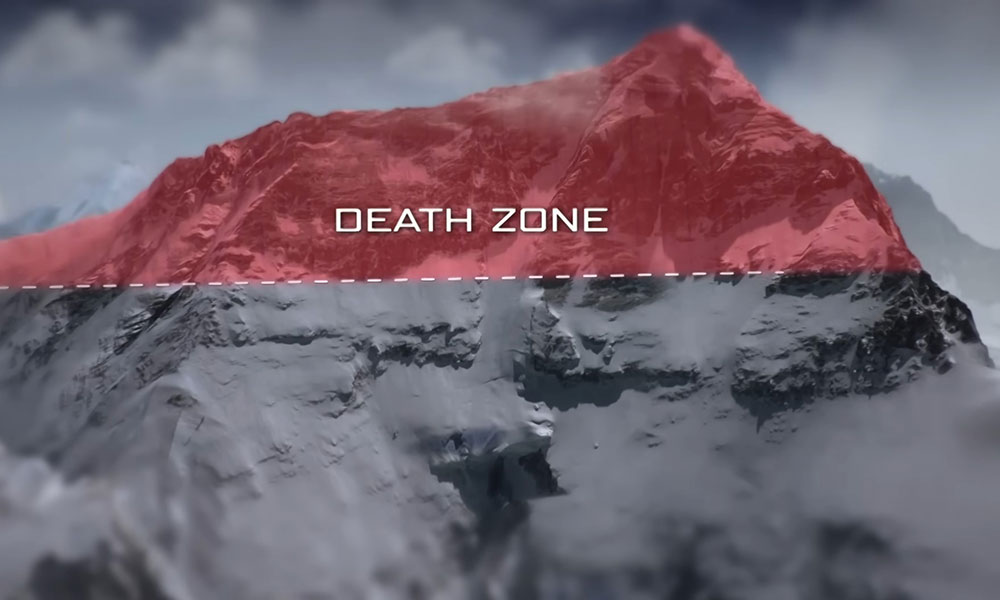
The human body works best at sea level, at this level oxygen saturation in the atmosphere is of adequate level for our brains and lungs. However, as you ascend to the higher altitudes, it becomes hard for the body to function properly.
There is a risk for the human body to catch altitude sickness over the altitude of 2,500 meters. Thus, certainly, climbing the highest snow-clad peak in the world at a great elevation point with much less oxygen saturation as you push through the high elevation points is not an easy task.
The death zone on Everest is such a hurdle during this epic expedition where the climbers have to deal with the low oxygen saturation level. The oxygen saturation inside the death zone on Everest is at 34%, which means that staying alive on this segment of the mountain is almost impossible for a normal mountaineer.
In fact, the dearth zone on Everest is so dangerous that your body starts breaking down and your body starts to die minute by minute and cell by cell. As the brain and lungs inside the death zone starve for oxygen, the risk of heart attack and stroke is significantly high, it also impairs the visual and judgmental aspects.
Combined with the physical exertion of the long days of scaling and gambling against the time, the Everest expedition can be too much for light-hearted climbers who cannot stay composed during challenging situations.
Some of the climbers who have taken upon this epic expedition and tackled the death zone on Everest have compared the experience with,
‘running on a treadmill while breathing through a small straw’
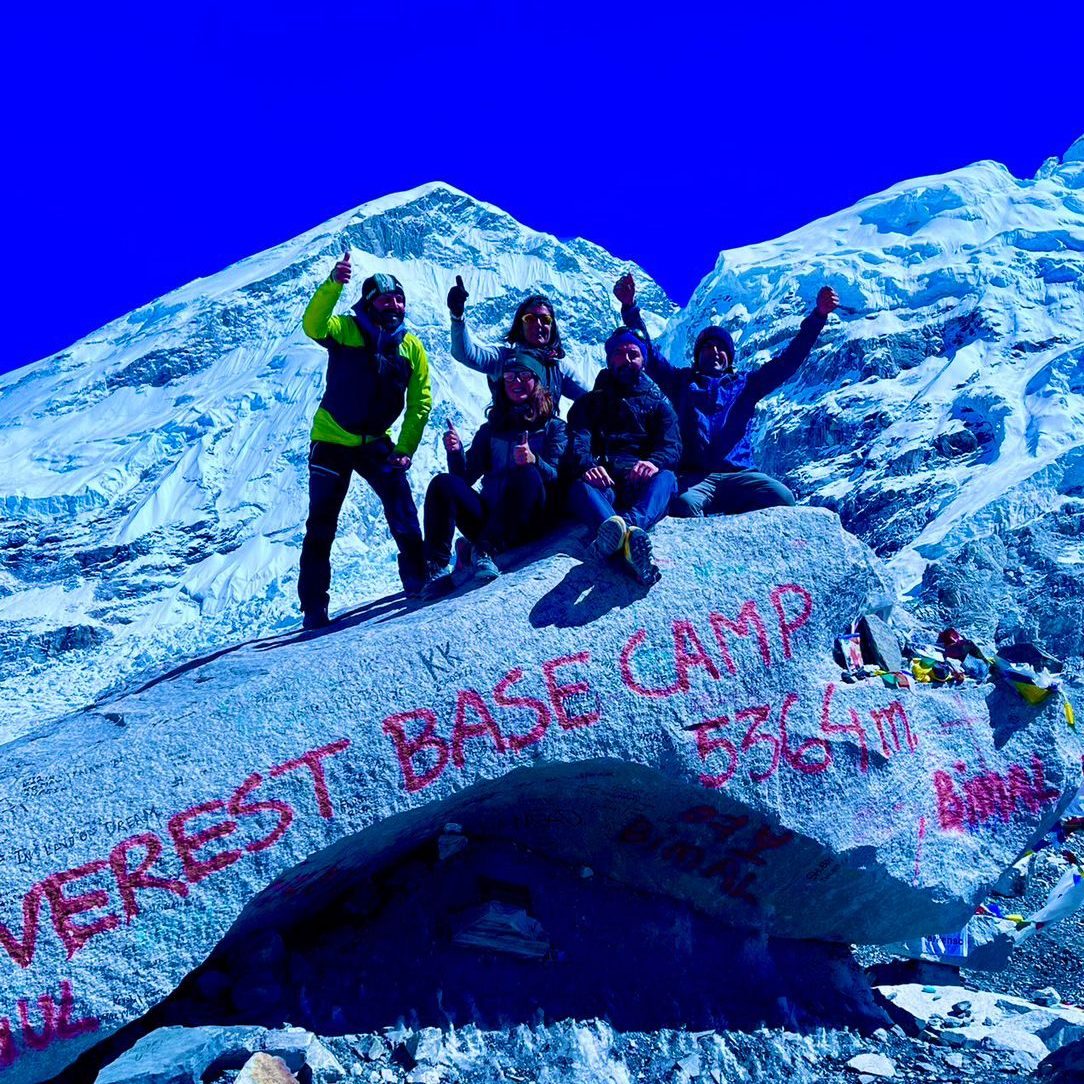
12 Days Everest Base Camp Trek Itinerary and Cost For 2024
Everest Base Camp Trek: Adventure and trekking to Everest Base Camp (5364 m) in Nepal. Cost-effective trek to EBC, 12 Days Base Camp Trek. Book now.
Enquire Now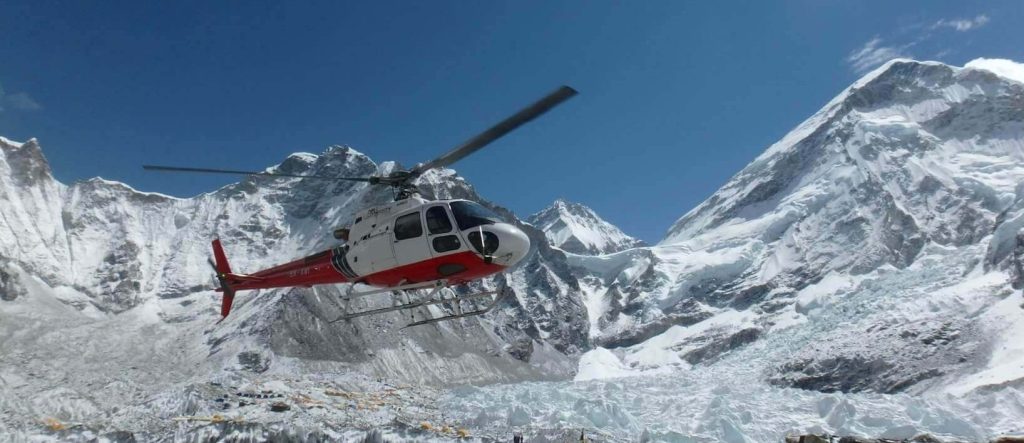
Everest Base Camp Helicopter Tour
Do you dream of seeing Everest but do not quite fancy spending a few weeks hiking there? Well, don’t worry – we have the solution for you. We can take you to Everest in just one day – all in the comfort and thrill of a Helicopter!
Enquire Now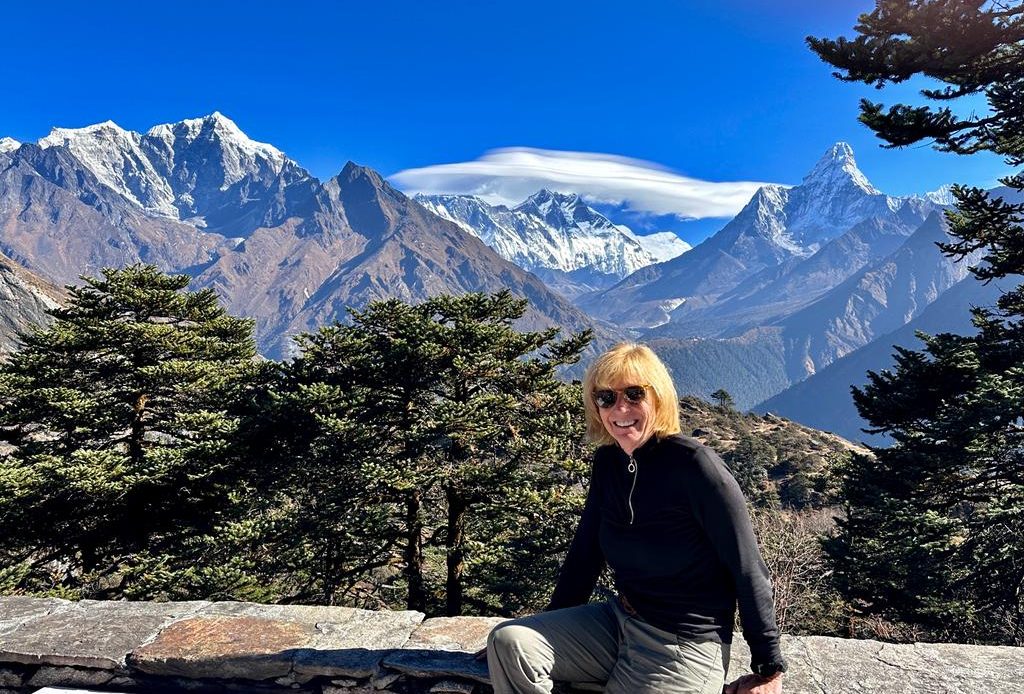
Luxury Everest Base Camp Trek
Luxury Everest Base Camp Trek presents adventure and comfort in the Himalayas. It’s a dream adventure for many outdoor enthusiasts, offering a unique opportunity to…
Enquire NowWhat Happens to Your Body in the Death Zone?

Besides your body dying minute by minute and cell by cell, you will also have to stay on the lookout for mountain sickness and hypoxia. As you ascend over an altitude over 8,000 meters to overcome the death zone on Everest, there are risks of catching altitude sickness like Acute Mountain Sickness (AMS), High Altitude Pulmonary Edema (HAPE), and High Altitude Cerebral Edema (HACE).
Although the milder form of altitude sickness isn’t seen as a major concern, as you enter the death zone, there are high chances of you catching the more severe form of altitude sickness which are medical emergency and can be life-threatening.
Similarly, hypoxia is another concerning condition that is the result of an inadequate supply of oxygen to the vital organs of your body. This condition is so deadly that it can destroy your brain, liver, and other vital organs in your body just minutes after the symptoms start.
When your brain doesn’t get enough supply of oxygen, it starts to swell and results in the condition called High Altitude Cerebral Edema (HACE), the severe and final stage of acute mountain sickness.
This end stage of altitude sickness can trigger headaches, and nausea, and even affect the simple thinking and reasoning capabilities. In this stage where the brain starts to swell, climbers are also known to enter delirium which is considered a form of psychosis.
Mountaineers who reached the final stage of HACE have been known for doing strange things like talking to imaginary friends, shedding their clothes despite the freezing cold, and leaving the marked trail wandering about.
Other Possible Dangers Inside Death Zone on Everest

The mountaineers near the death zone also have to protect themselves from the higher UV radiation that reflects off the ice and snow which can even damage their eyesight. Similarly, on the freezing slope where the temperature is generally around -18 ºC, there is a high risk of frostbite.
‘any exposed skin inside the death zone on Everest freezes instantly
Frostbite is most common in the body parts like fingers, toes, nose, and ears, in extreme freezing conditions the exposure can gangrene tissue, where amputation is the only option. Snow blindness is another dangerous condition in the death zone where mountaineers face temporary vision loss due to the widespread endless snow and ice on the slopes.
Furthermore, fatigue is another ever-present challenge that the mountaineers have to deal with. It is an extremely tiresome condition due to mental and physical exertion or any kind of sickness during the expedition.
All these physically weakening and vision-impairing conditions can lead to accidental falls and climbers not being able to move at all from their position. In fact, fatigue is such a fatal condition during mountain expeditions that it is the second leading cause of death on the mountain after altitude sickness.
How Long Climbers Stay Inside the Death Zone?

If you are familiar with the Everest expedition then you might have at least heard the two o’clock rule on Everest. No, it isn’t a specific period where the mountaineers gather around to celebrate their successful ascent of the highest peak in the world.
This general thumb rule for every mountain expeditioners heading to the top of Everest indicates their gamble against the time. If the climbers pushing for the summit inside the death zone on Everest don’t make it to the top by 2:00 p.m., then they have to give up on ascending for that day.
It may seem trivial as to why the climbers should give up just because they have fallen a little behind the 2 p.m. as they are already getting close to the summit. But there are reasons why this rule should be respected and honored during the Everest expedition.
The scaling of the summit of Mt. Everest (8,849 meters) from Cap IV (7,950 meters) takes approximately 7- 9 hours. Climbers push for the summit starting early in the morning with limited supply considering the designated hours for the scaling.
Thus, in case any of the climbers fall behind the scheduled time frame, there are high chances of them running out of the limited supply they are carrying. As the supply the climbers carry with them is limited, especially the supplementary, the elongated hours inside the death zone on Everest can be fatal.
Mountaineers who have fallen behind the 2 p.m. summit push timeframe should give up on the summit push and try it again on other days. Not only it is risky to stay inside the death zone on Everest for more than 16- 18 hours, but pushing for the summit after 2 p.m. means the return trip will be in pitch dark.
So, there are high probability of the climbers not being able to properly maneuver along with the fixed rope and have often been known to lose the way instead of arriving at Camp IV. The tired body after the exhausting summit push, limited supplies, and lower visibility are the most dangerous combinations when it comes to scaling an 8,000-meter class mountain like Everest.
Importance of Acclimatization for a Successful Summit

You might have noticed that mountain expeditions are generally long, although the general timeframe for high-altitude trekking can be around two weeks, the expedition period is significantly much higher.
Normally, you can do the highest base camp trekking expedition, the Everest Base Camp trek within just 12- 14 days, but the expedition that scales to the summit of the mountain which is just 3,485 meters high from the base camp can take upto two months.
From an average person’s perspective, it might not make sense to spend so much time on the mountain just to cover an approximate distance of 3,485 meters. However, the mountain expedition that scales the highest peak in the world, also known as the ‘Third Pole’ is much more complicated.
If you have ever done a high-altitude trekking adventure, then you might be familiar with the acclimatization process where you are given certain rest days to properly adapt to the rising altitude. The same principle is applicable during this mountain expedition where the climbers have to overcome the death zone on Everest.
Generally, the high-altitude adventure includes acclimatization destinations over an altitude of 2,500 meters as there is a risk for the human body to catch altitude sickness over this elevation point. During any kind of high-altitude adventure, it is recommended that you shouldn’t ascend over an altitude above 500 meters during a single day’s climb.
Similarly, after every 1,000-meter threshold, you are recommended to have an acclimatization day to let your body get used to the rising altitude so you don’t risk your health. As the Himalayan adventures in Nepal are designed for a slow-paced exploration, you will get enough time to acclimatize to the new rising environment even during the trekking adventure, so the acclimatization days are in fewer numbers.
However, when it comes to dealing with the freezing alpine environment on the mountain slopes, it’s entirely a different story. Like the normal setting on the land even at higher altitudes, it is much easier to acclimatize, compared to the alpine freezing conditions on the mountain.
So, during the two-month-long Everest expedition, most of the time goes toward the acclimatization process and practice climbing. The climbers spend a significant amount of time scaling to higher camps and descending to lower as they try to adapt to the alpine mountain setting preparing for the summit push.
The mountain climbing preparation at the base camp as well as at the higher camp also takes a significant amount of time. Climbers keep repeating the process until the day they are finally ready for the summit push.
Everest Rainbow Valley
As the name suggests, you might be expecting something colorful and cheering valley that lies beyond the treacherous slopes of Everest. However, the reality is much darker and horrible, the rainbow valley in Everest is the segment below the northern ridge of the mountain which is also known as the ‘Everest Graveyard’.
This particular segment inside the death zone on Everest to the northern side has dead bodies of the climbers who died during their expedition scattered all around the mountain slopes. The colorful clothes on the corpses of the mountaineers scattered all around the slope make this segment look like a rainbow from a distance. As the dead bodies don’t decompose at such altitude and are perfectly preserved over the years the increased number of deaths in this segment just added more colors to the graveyard.
Red, blue, green, yellow, and orange colored jackets are just a few colored jackets that the climbers pass while traversing across this segment Other than the dead bodies, this section has been filled with garbage, tents, oxygen bottles, and cans over the years, make it seem like a colorful section on the snow-clad slopes.
The mountaineers passing this segment on the mountain pushing onward get nervous with the sight they see in the Everest rainbow valley and understand how treacherous and unforgiving the slopes of this majestic peak can be.
Read this next:
Why the Mt Everest Dead Bodies Are Not Brought Down?
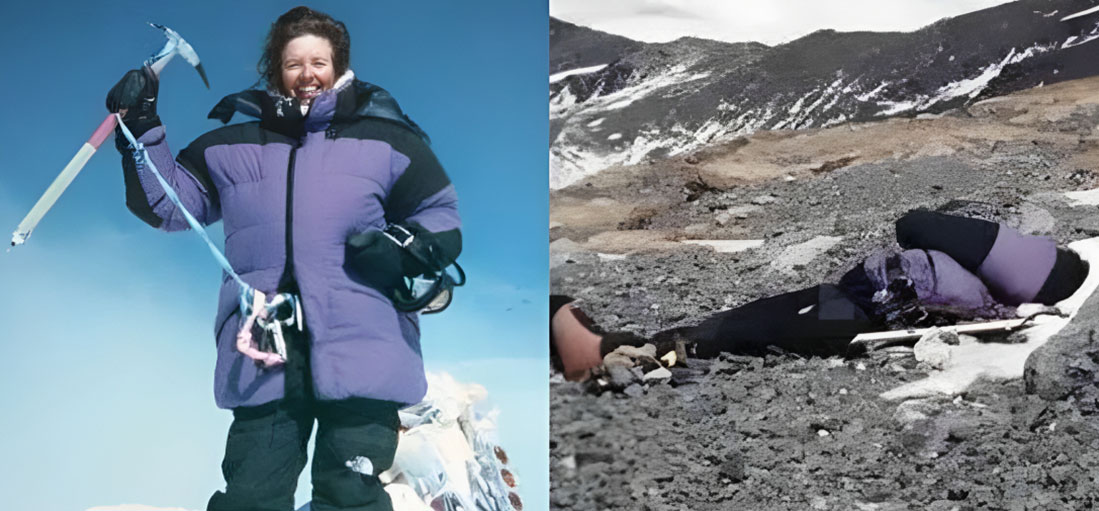
Considering the piling number of dead bodies on the slopes of the mountain, especially in the death zone on Everest, it is natural to get curious as to why these bodies are not brought down. If the dead bodies were brought down along with the garbage left out by the climbers, it would certainly clear up space on the slopes and the poor souls could be put to rest.
However, retrieving the dead bodies from the slopes of the mountain isn’t an easy or cheap job, the operation gets even more complicated if the dead body is inside the deadly death zone on Everest. There is no proper footing area above Camp II (6,400 meters) on Everest for the helicopter to land, so the retrieval operation above this point has to be manually carried out.
You might have heard stories about the climbers who couldn’t move and were left behind, it is an unspoken rule during the Everest expedition ‘Every man for himself’. It is also strategically the most correct decision and every climber who is ascending on the peak knows it.
The slopes on this highest peak in the world are dangerous and if you try to take responsibility for the climber who isn’t able to move properly, it could even jeopardize your life. So, even when encountering mountaineers unable to move on the slopes, most climbers leave them behind and proceed along with their scaling.
So, retrieving dead bodies from such letha slopes isn’t an easy job and requires a group of experts who can execute the operation efficiently without putting anyone’s life in danger. Normally, the cost of the dead body retrieval operations from the mountain starts at US$ 70,000 and can hit higher margins depending on the location of the dead bodies.
There isn’t a guarantee that the team will be successfully able to retrieve the body because it requires a significant amount of time for the search and most often the bodies are already covered in deep snow. In the past, there have been instances where the search and retrieval team wasn’t able to locate the dead bodies.
So, most of the families of the mountaineers don’t hire the trivial operations, and as the snowy slope of the mountain perfectly preserves the dead bodies, the dead bodies just keep piling up.
Another reason why the dead bodies on Everest are left there on the slopes to rest there is due to the sea voyage traditions that the mountaineers have adapted to. Like the voyagers who die at the sea are buried in the sea, the mountaineers with an undying love for the snow-clad mountains are put to rest on its snowy slopes
What is the Main Cause of Death in the Death Zone on Everest?
From 1922 to the spring climbing season of 2023, a total of 318 mountaineers died while trying to scale the highest peak in the world. Out of the 318 deaths, 193 were the mountaineers whereas the 125 were the guiding members of the expedition team.
According to the data of the Himalayan Database, the death rate on the slopes of Everest averages around 6.2 climbers per year. Among all the deaths on Everest, both avalanches and falling from the climbing route have claimed over 70+ lives on the slopes of the mountain.
Fatigue and acute mountain sickness take third and fourth place with over 30+ deaths. Similarly, exposure to high-altitude climatic conditions has also claimed the lives of more than 25+ lives, and other deaths are related to non-AMS-related illnesses.
Even though the overall death rate on the climb of the Everest expedition is at 1% and 4% for the successful attempts which is lower compared to other difficult peaks, it doesn’t mean that this scaling to the top of the world is less strenuous.
The climatic conditions and the circumstances on the slopes of Everest can be never unpredictable, it doesn’t take a moment for things to turn ugly from just looking bad. Out of all deaths on Everest, the most significant number of the deaths on the mountain has been inside the death zone.
How Long Your Oxygen Level Can Drop Before You Die?
When it comes to overcoming the death zone on Everest, this is one of the most researched questions. To put it in simple words, the human body is at optimum performance when the oxygen saturation in the body is above 90%.
The bodily functionality isn’t obstructed even when the oxygen level drops to 85%, as you ascend to the higher elevation the oxygen saturation stays around 85%- 86% which is still quite normal for the body to function properly. But after the oxygen saturation level in your body starts dropping below that, the condition can be life-threatening.
If your oxygen level drops below 55%, then there is a high probability that it will result in unconsciousness stage or even death. That’s why during high-altitude trekking adventures and expeditions, your oxygen level is frequently checked to determine how well you are doing with the rising altitude.
You may also like:




